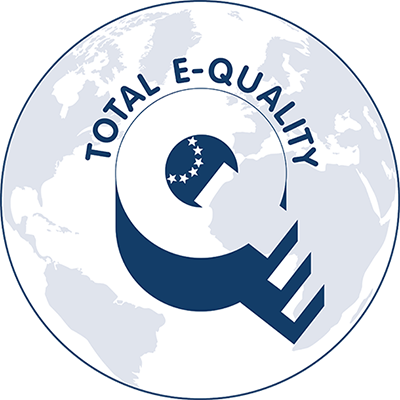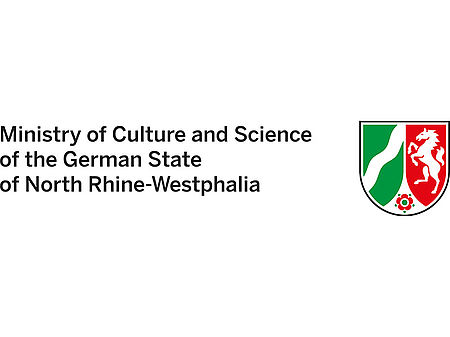The role of an academic author: key tips for researchers
Researchers communicate the results of their scholarly work by publishing them in scientific journals. This makes authorship an essential element of any scientist’s work and a vital part of their career, especially in the life sciences.
As well as being important for copyright reasons, the publication of academic research papers is also an integral part of good scientific practice and can have a major impact on a researcher’s reputation. Below, we explore each of these aspects in turn.
Copyright aspects
As the creator of an academic work, an author is a copyright holder whose rights are governed by the German Act on Copyright and Related Rights (Urheberrechtsgesetz – UrhG). This stipulates the circumstances under which authorship is recognised and defines which works are copyright-protected. It also sets out the corresponding rights held by the copyright holder, in particular the use and exploitation rights.
You can find more detailed information in the following section of our FAQs Copyright and academic research: what are the key issues that affect you as an author?
Co-authorship
Academic manuscripts often have multiple authors, especially in the life sciences. According to Section 8 of the German Act on Copyright and Related Rights, all the co-authors share responsibility for the publication of their work and must collaborate on judging the paper’s suitability for publication and decide jointly where it should be published. A co-author may not, however, withhold their consent to publish the paper without reasonable justification.
What is required to claim co-authorship?
According to the “Guidelines for Safeguarding Good Research Practice – Code of Conduct” published by the German Research Foundation (DFG), authorship may be claimed by “an individual who has made a genuine, identifiable contribution to the content of a research publication” (Guideline 14). The DFG Code of Conduct gives the following examples of such a contribution:
- the development and conceptual design of the research project; or
- the gathering, collection, acquisition or provision of data, software or sources; or
- the analysis/evaluation or interpretation of data, sources and conclusions drawn from them; or
- the drafting of the manuscript.
The International Committee of Medical Journal Editors (ICMJE) sets stricter standards for authorship; it requires researchers to be involved in all four tasks; that is:
- substantial contributions to the conception or design of the work; or the acquisition, analysis, or interpretation of data for the work; and
- drafting the work or revising it critically for important intellectual content; and
- final approval of the version to be published; and
- agreement to be accountable for all aspects of the work in ensuring that questions related to the accuracy or integrity of any part of the work are appropriately investigated and resolved.
According to the ICMJE, any contributors who do not meet all four of these criteria should be mentioned in the acknowledgements (see below), ideally together with a specific definition of their contribution. What’s more, all individuals who participated in the conception or design of the work – or the acquisition, analysis, or interpretation of data for the work – should be given the opportunity to participate in the remaining tasks that would entitle them to be designated as authors.
Journals that follow these recommendations are listed on the ICMJE website.
Assigning authorship to individuals who have not made any contribution to a publication may be deemed as research misconduct. The DFG Code of Conduct specifically prohibits honorary authorship and co-authorship based solely on a leadership or supervisory role.
Failure to assign co-authorship to an individual who has made a relevant contribution to a publication is also regarded as research misconduct.
More information is available in the following section of our FAQs An introduction to good research practice, research misconduct and academic integrity
Corresponding authors
A corresponding author takes primary responsibility for submitting the publication to a journal and communicating with the editors during the peer-review process. They also act as a point of contact for any queries from readers. In the case of co-authorship, the co-authors jointly determine who should fulfil the role of corresponding author.
Author sequence
The order in which authors are listed may give an important indication of how much each individual contributed to the publication. The interpretation of author sequence depends heavily on the context, however; its significance may differ depending on the country, the conventions within a scientific community, the applicable guidelines from the relevant professional society, and the scientific journal in which the academic paper is to be published.
The simplest way to determine the sequence of authors’ names is to sort their surnames alphabetically, which obviously allows no conclusions to be drawn on who contributed what. Otherwise, the positions in the list of names that are generally considered to have the most importance are the first author and the last author. The first author may be considered to have contributed most to the publication, while the last author is often seen as responsible for the funding of the research project.
This decision on author sequence is a separate issue from the designation of the corresponding author(s) (see above). The order in which authors are listed is often a subject of negotiation between the co-authors. It is advisable to check beforehand whether there are any community-specific conventions or any requirements laid down by the scientific journal.
Contributor Role Taxonomy (CRediT): a standardised way of classifying each participant’s contribution
While the sequence in which authors are listed may leave room for interpretation as to which author contributed what, the Contributor Role Taxonomy (CRediT) attempts to provide a universal, standardised set of roles to make the situation clear. The taxonomy currently includes 14 roles typically played by contributors in research projects. These range from conceptualization of the research work to the various roles involved in writing the actual manuscript. One advantage of this taxonomy, especially for authors, is the potential it has to reduce conflicts and highlight contributions that fall outside the actual preparation of the manuscript. The system is flexible, allowing multiple names to be assigned to each role and individuals to be assigned to more than one role.
The increased transparency and visibility provided by CRediT also benefits other key stakeholders in the scientific community such as research funding bodies and research institutions. The taxonomy also fosters good research practice by encouraging researchers to name all legitimate contributors and to refrain from assigning authorship to individuals who did not make a contribution.
Many journals already require authors to include a corresponding section in their manuscript declaring the contributions of each individual author. The CRediT website (see link on right) also includes a list of publishers who have opted to implement this taxonomy.
Distinguishing between authorship and acknowledgements
Assigning authorship to individuals who have not made a significant contribution to the research work or to the writing of the manuscript is regarded as research misconduct. There may, however, be certain contexts in which it is appropriate to acknowledge individuals who formulated ideas or who provided assistance, comments, support or reviews. Such individuals are typically named in the acknowledgements section. The decision on who to recognise in the acknowledgements often comes down to the relevant journal’s guidelines as well as other criteria.
Assigning a publication to an individual using a unique, persistent identifier or author ID
Publications can be assigned to specific individuals by means of persistent identifiers such as the Open Researcher and Contributor ID (ORCID) or author IDs allocated by databases. The use of unique, persistent identifiers ensures that publications are assigned correctly even in cases where two authors share the same name. The same applies to an author who changes their name: a number-based digital ID means that their publications will always be properly assigned to them even if their name changes from one paper to the next.
The ORCID registry of persistent identifiers currently appears to be gaining increasing acceptance on an international level. Many journal publishers and conference organisers already recommend or require an ORCID with manuscript submissions. To obtain an ORCID, simply register for free on the ORCID website.
Interdisciplinary databases such as Web of Science and Scopus assign their own unique identifiers: a “ResearcherID” in the case of Web of Science, and an “Author ID” in the case of Scopus. Some journals also request one of these identifiers with manuscript submissions. Where available, these can be provided in addition to an ORCID.
A number of other systems are also in use, such as the Integrated Authority File (GND) system, which is used mainly for documentation in libraries.
See also
DOI, ORCID and ROR: What makes persistent identifiers so useful?
Remuneration of authors
In the life sciences, it is relatively unusual for authors to receive a fee for writing academic papers for publication in a journal or elsewhere. Authors of academic books sometimes receive a share of the profits from the publishers, but only once the cost of publishing the book has been recouped. Any remuneration to which the author is entitled should be stipulated in the author’s contract.
Authors also have the option of signing an agreement on the assignment and administration of rights with VG Wort, the German collecting society that manages the rights of authors and publishers. They can then register their academic publications with the society and receive a share of the proceeds. Both electronic and print publications can be registered. Payments from VG Wort should not be understood as remuneration or a royalty payment, however, but rather as a kind of compensation for lost income in relation to copies covered by the German Act on Copyright and Related Rights. You can find more details on the VG Wort website. How you can receive VG Wort payments for open access articles is explained in an article on iRights.info (German only).
Additional information
We recommend visiting the websites of the various journals and publishers to get more information. This will often include details of the criteria used to assign authorship, information on whether contributions from co-authors should be acknowledged and what form this should take, and stipulations on the order in which the authors' names should be listed. Look for the section entitled "Information for authors" or pages with a similar title. We recommend reviewing the publisher's requirements well before submission in order to prepare your manuscript properly and finalise any necessary arrangements between the various co-authors.
Disclaimer
Important note: The information and links provided here do not represent any form of binding legal advice. They are solely intended to provide an initial basis to help get you on the right track. ZB MED – Information Centre for Life Sciences has carefully checked the information included in the list of FAQs. However, we are unable to accept any liability whatsoever for any errors it may contain. Unless indicated otherwise, any statements concerning individual statutory norms or regulations refer to German law (FAQ updated 07/2022).
Contact

Dr. Jasmin Schmitz
Phone: +49 (0)221 999 892 665
Send mail
References
German act on copyright and related rights of 9 Semptember 1965, last amendmends on 23 June 2021 (BGBl. I S. 1858), Bundesministerium für Justiz. (accessed 29/11/2022)
Guidelines for Safeguarding Good Scientific Research Praxis: Code of Conduct of September 2019, corrected version 1.1, Deutsche Forschungsgemeinschaft e.V.
International Committee of Medical Journal Editors (2022). Defining the Role of Authors and Contributors. ICMJE. (accessed 29/11/2022)
CRediT – Contributor Roles Taxonomy, CRediT. (accessed 29/11/2022)
Related Links
Journals stating that they follow the ICMJE Recommendations
Elsevier: What is the Scopus Author Identifier?
Wissenschaftliche Publikationen
ORCID for Researchers
Web of Science ResearcherID
Reda, F. (2024) Kein Widerspruch: Open Access und Vergütung durch die VG Wort. iRight.info, 26 July 2024. (accessed 08/29/2024) (German only)




